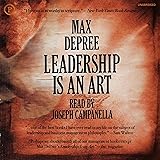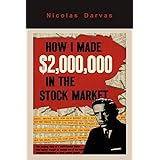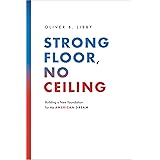When considering an investment in physical **gold bars**, one often encounters a fundamental dilemma: what size offers the optimal balance of value, liquidity, and security? Perhaps you’ve experienced the internal debate, weighing the immediate cost savings against future flexibility. Just as the video above astutely highlights, the choice between a 10-ounce gold bar and a 1-ounce gold bar isn’t merely about the face value; it delves into the intricate economics of precious metals investment.
The decision regarding the ideal size of your **gold bars** can significantly impact both your entry cost and your exit strategy. Savvy investors understand that while the allure of a larger, more impressive bar might be strong, the nuanced realities of premiums, market depth, and logistical considerations often paint a more complex picture. Navigating these factors requires a deeper dive into the mechanics of bullion trading and an honest assessment of your personal investment objectives.
## The Premium Paradox: Cost-Effectiveness of Larger Gold Bars
Firstly, the most immediate and tangible benefit of purchasing larger **gold bars** is the reduced premium per ounce. This economic principle, briefly touched upon in the video, is a cornerstone of bullion acquisition. Essentially, the manufacturing, assaying, and distribution costs associated with producing a 10-ounce bar are not ten times that of a 1-ounce bar; these fixed costs are spread over a greater quantity of gold.
Consequently, buyers typically pay less over the fluctuating spot price for larger denominations. For instance, the video notes a potential saving of “about $20 per ounce less” for a 10-ounce gold bar compared to its 1-ounce counterpart. This significant discount translates directly into more gold for your dollar, making larger bars appealing for those with substantial capital seeking to maximize their ounces. However, it is crucial to continually monitor these spreads, as they can fluctuate based on market demand, supply chain efficiency, and dealer overheads.
## Liquidity and Divisibility: Navigating the Selling Landscape
Secondly, while the cost benefits of larger **gold bars** are clear on the acquisition side, the liquidity profile shifts when it’s time to sell. The video succinctly captures this dynamic: it is often far simpler to find ten individual buyers for ten 1-ounce bars than to locate a single buyer for one 10-ounce bar. This disparity arises from the differing capital requirements of potential buyers.
A broader market exists for smaller, more affordable denominations, appealing to a wider spectrum of investors and collectors. Larger bars, while offering a lower premium to the initial buyer, often command a larger single transaction value, thereby narrowing the pool of prospective purchasers. This can translate into a longer selling period or potentially a less favorable spread if you need to liquidate quickly. Understanding this trade-off between initial cost efficiency and future market access is paramount for strategic precious metal investors.
## Beyond 1 Oz and 10 Oz: Exploring the Full Spectrum of Gold Bar Sizes
Thirdly, the world of **gold bars** extends far beyond the common 1-ounce and 10-ounce options. Investors have access to a diverse array of sizes, each with its own advantages and disadvantages. From fractional gold bars weighing as little as 1 gram or 5 grams, ideal for small gifts or initial entry points, to 100-gram and even kilogram bars (approximately 32.15 troy ounces), the choices reflect various investment scales.
For institutional investors or those making very large purchases, the 400-ounce “Good Delivery” bar, a standard in central bank holdings and global exchanges, represents the pinnacle of bulk gold ownership. Smaller bars, while carrying higher premiums, offer superior divisibility and are often favored for their “emergency cash” potential. Conversely, significantly larger bars like the kilo bar still provide excellent value per ounce for serious investors, albeit with the same liquidity considerations as the 10-ounce bar, just magnified. Your capital and specific investment goals should guide your selection of these various gold bar formats.
## Storage and Security Considerations for Your Gold Investment
Fourthly, the practicalities of storing physical **gold bars** also play a significant role in determining the optimal size. Larger bars require less physical space per ounce compared to an equivalent weight in smaller bars. This efficiency can be a factor when considering secure storage options, whether it be a home safe, a safety deposit box, or a professional vaulting service. However, the higher monetary value concentrated in a single, larger bar might necessitate enhanced security measures or more comprehensive insurance coverage.
Conversely, a collection of smaller gold bars might offer a degree of distributed risk; if one unit is compromised, the entire holding is not necessarily affected. This distribution can also be advantageous for partial liquidation strategies, allowing you to sell only what is necessary without breaking into a much larger, indivisible asset. Evaluating your security infrastructure and risk tolerance is an integral step in deciding on the appropriate gold bar dimensions.
## The Role of Gold Bars in a Diversified Investment Portfolio
Fifthly, integrating **gold bars** into a broader investment portfolio offers distinct advantages that extend beyond the choice of bar size. Physical gold has historically served as a reliable hedge against inflation, currency devaluation, and geopolitical instability. It functions as a tangible store of value, providing a counterbalance to paper assets like stocks and bonds, particularly during periods of economic uncertainty.
For investors focused on wealth preservation and portfolio diversification, allocating a portion of assets to physical **gold bars** can reduce overall portfolio volatility. The decision to invest in 1-ounce, 10-ounce, or other sizes of gold bars should align with your overarching financial strategy, reflecting your capital availability, risk appetite, and long-term objectives. Ultimately, the most prudent approach involves due diligence and selecting the gold bar size that best complements your individual investment framework.











